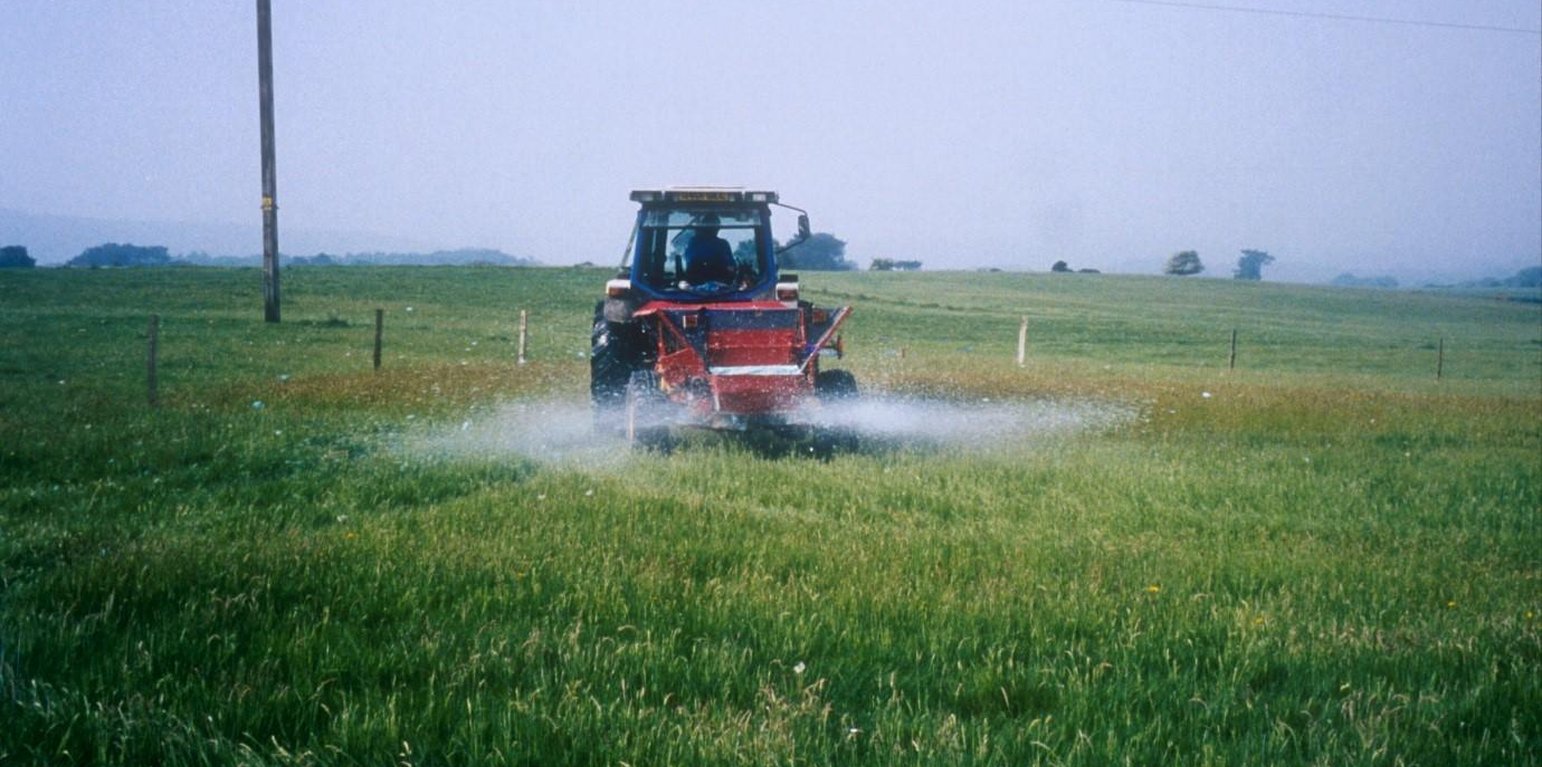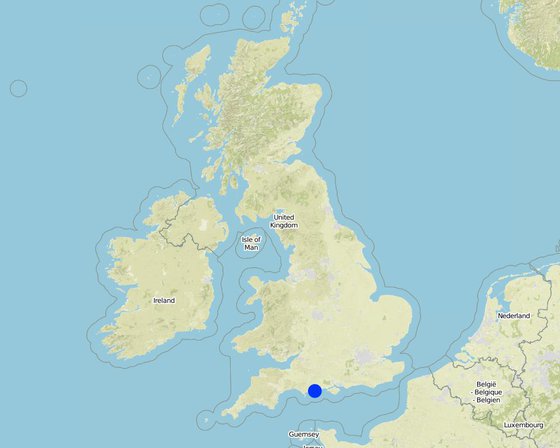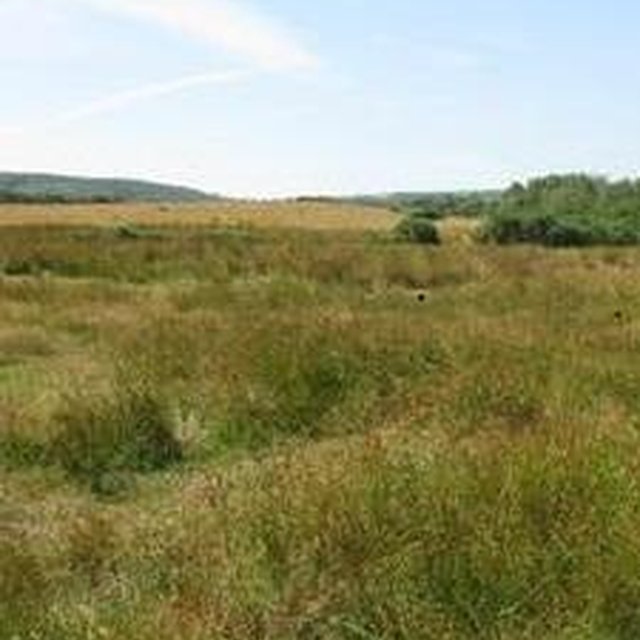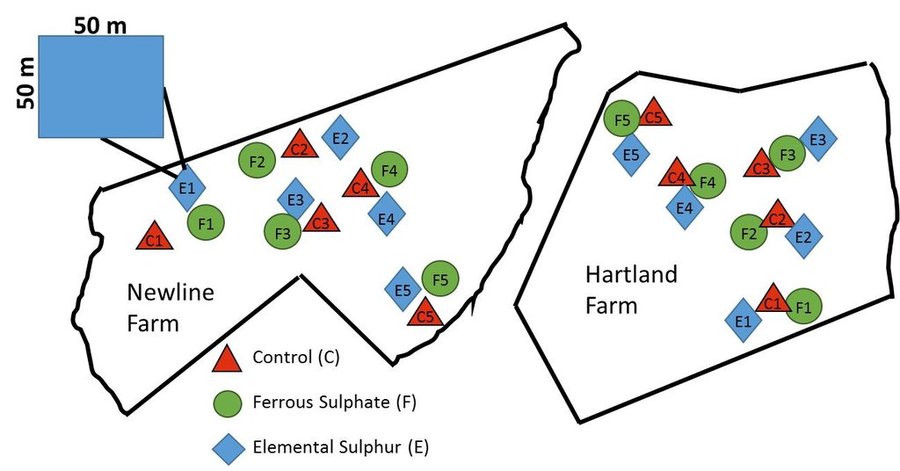



Change in landuse from improved agricultural land to low input grazing land. Acidification treatments were applied to plots on the Isle of Purbeck that had previously been used for arable production and then high intensity grazing. The site is located on acidic fluvially-deposited soil and was in lowland heath until the middle of the 20th century at which time the land was tilled and treatments of rock phosphate, marl and chalk were added to increase soil pH and nutrient availability and improve the potential of the land for agricultural production.
Purpose of the Technology: The purpose of this technology was to convert the area from intensive pastureland to a semi-natural state with low intensity grazing through alteration of the soil pH. This change in land-use should have a positive effect on both above- and belowground biodiversity.
Establishment / maintenance activities and inputs: Plots were established on two adjacent farms owned by National Trust near Wareham, Dorset (Newlines Farm and Hartland Farm). A control and two sulphur amendments were compared on plots on ten fields (five from each farm) on 50 m x 50 m plots. Elemental sulphur (Brimestone 90TM) or ferrous sulphate (Mistrale “Wet Copperas” 50TM) were applied at equal rates of 2000 kg ha-1 in May 2000 and a second application of 1600 kg ha-1 in March 2001.
Natural / human environment: The Isle of Purbeck is a multifunctional landscape with competing land uses including arable farming, livestock grazing, and recreational activities. Soil resources in the region have been under pressure from persistent physical and chemical manipulation, with consequences for soil biodiversity and function.

ទីតាំង: Wareham, Dorset, ចក្រភពអង់គ្លេស
ចំនួនទីកន្លែងបច្ចេកទេស ដែលវិភាគ:
ការសាយភាយនៃបច្ចេកទេស:
តើស្ថិតក្នុងតំបន់ការពារអចិន្ត្រៃយ៍?:
កាលបរិច្ឆេទនៃការអនុវត្ត: 10-50 ឆ្នាំ
ប្រភេទនៃការណែនាំឱ្យអនុវត្តន៍៖




